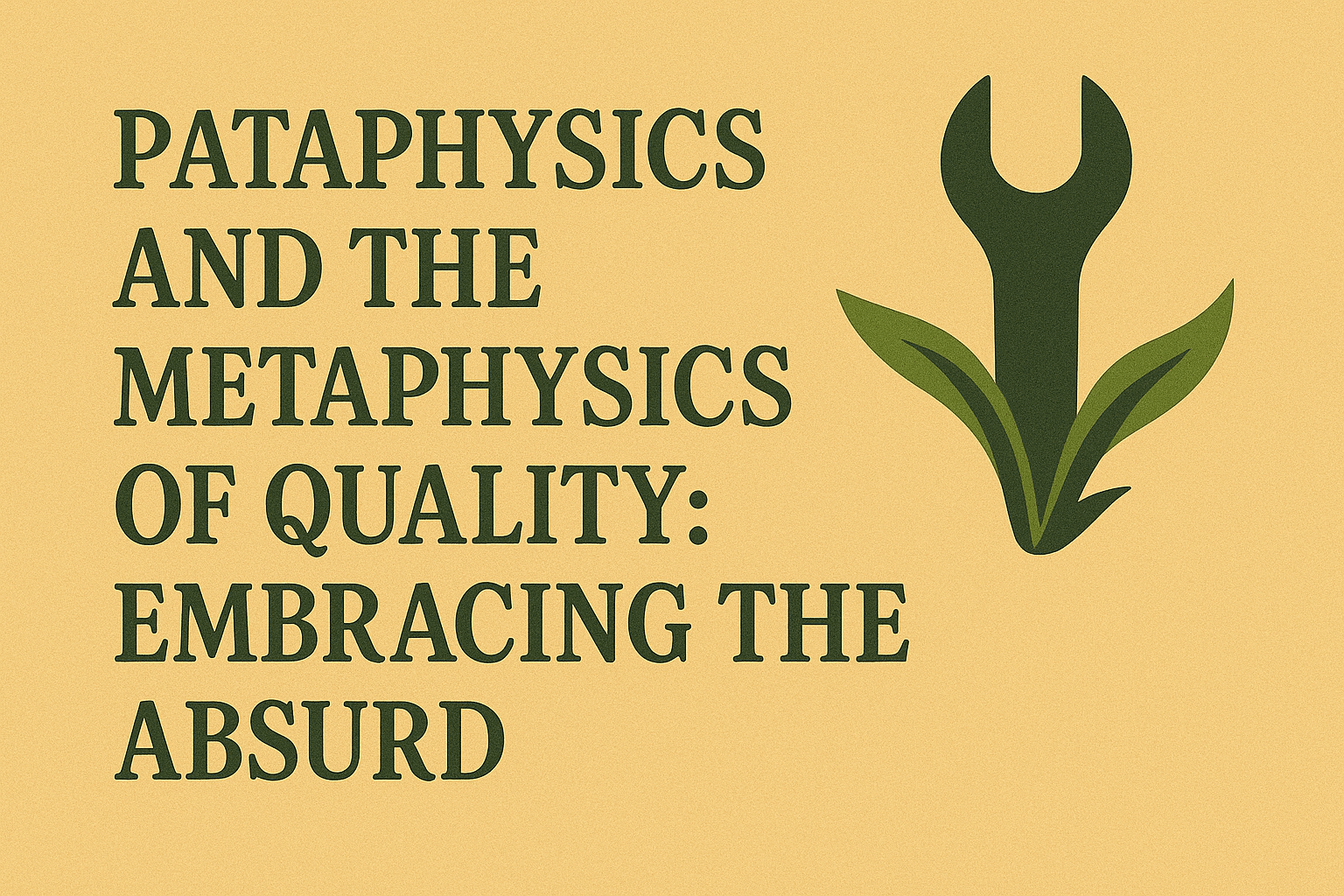Analyzing Alfred Jarry’s pataphysics and its connections to Pirsig’s dynamic quality. Overview of pataphysics, its emphasis on imaginary solutions, and how it aligns with dynamic quality.
Alfred Jarry’s pataphysics and Robert M. Pirsig’s Metaphysics of Quality (MoQ) offer intriguing, albeit unconventional, perspectives on reality. While Jarry’s pataphysics delves into the realm of the absurd and imaginary, Pirsig’s MoQ emphasizes quality as the core of existence, particularly focusing on dynamic quality. This article analyzes the connections between pataphysics and dynamic quality, highlighting their shared emphasis on creativity, innovation, and the transcendence of conventional thought.
Overview of Pataphysics
Pataphysics, a pseudo-scientific philosophy invented by French writer Alfred Jarry in the late 19th century, explores imaginary solutions and the laws governing exceptions rather than the rules. Defined as the “science of imaginary solutions,” pataphysics embraces the absurd, the whimsical, and the unconventional.
- Imaginary Solutions: Pataphysics posits that reality is not limited to what is empirically observable or logically consistent. Instead, it includes imaginary and absurd dimensions that challenge conventional logic and perception. These “imaginary solutions” offer alternative ways of understanding and engaging with the world.
- Beyond Metaphysics: Jarry described pataphysics as existing “beyond metaphysics,” implying that it transcends traditional philosophical boundaries and embraces a more fluid, imaginative approach to reality. This perspective encourages a playful and creative exploration of concepts that defy rational explanation.
- The Absurd and the Whimsical: Central to pataphysics is the celebration of the absurd and whimsical aspects of life. Jarry’s work often satirizes the rigidity of scientific and philosophical thought, advocating for a more liberated and imaginative worldview.
The Metaphysics of Quality (MoQ)
Robert M. Pirsig’s Metaphysics of Quality, articulated in his works Zen and the Art of Motorcycle Maintenance and Lila: An Inquiry into Morals, presents quality as the fundamental essence of reality. Pirsig divides quality into two categories: static quality, which pertains to stability and order, and dynamic quality, which involves change, creativity, and innovation.
- Static Quality: Represents the structured, ordered aspects of life. It includes traditions, norms, and established patterns that provide continuity and reliability.
- Dynamic Quality: Embodies the creative, changing forces that drive progress and innovation. Dynamic quality is fluid, spontaneous, and transcends the limitations of static patterns.
Connections Between Pataphysics and Dynamic Quality
The intersections between Jarry’s pataphysics and Pirsig’s dynamic quality reveal shared themes of creativity, innovation, and the transcendence of conventional thought.
- Embracing the Absurd: Both pataphysics and dynamic quality celebrate the unconventional and the unexpected. Pataphysics, with its focus on imaginary solutions and the absurd, aligns with the dynamic quality’s emphasis on breaking free from static patterns and embracing change.
- Creativity and Innovation: Dynamic quality thrives on creativity and innovation, continually pushing the boundaries of what is possible. Similarly, pataphysics encourages imaginative thinking and the exploration of alternative realities, fostering a spirit of creativity and novelty.
- Transcending Conventional Thought: Pataphysics and dynamic quality both challenge the constraints of conventional logic and established norms. By transcending traditional boundaries, they open up new possibilities for understanding and engaging with reality.
Imaginary Solutions and Dynamic Quality
Imaginary solutions in pataphysics can be seen as expressions of dynamic quality. They represent the creative, innovative responses to challenges that defy conventional logic and expectations.
- Innovative Problem-Solving: Imaginary solutions epitomize the dynamic quality’s approach to problem-solving, where creativity and unconventional thinking lead to breakthroughs. These solutions often involve thinking outside the box and embracing the unexpected.
- Playfulness and Exploration: The whimsical nature of pataphysics encourages a playful approach to life and knowledge. This aligns with the dynamic quality’s emphasis on exploration and experimentation, where the journey of discovery is as valuable as the destination.
- Challenging Static Patterns: Both pataphysics and dynamic quality aim to disrupt static patterns and established norms. By introducing imaginary solutions, pataphysics challenges the rigidity of static quality, promoting a more fluid and adaptable understanding of reality.
Practical Implications
The integration of pataphysics and dynamic quality offers practical insights for various fields, including art, science, education, and personal development.
- Art and Creativity: Artists can draw inspiration from pataphysics and dynamic quality to create works that challenge conventional aesthetics and provoke new ways of seeing the world. Embracing the absurd and the imaginative can lead to innovative artistic expressions.
- Scientific Exploration: In science, the spirit of pataphysics encourages researchers to explore unconventional hypotheses and experimental approaches. Dynamic quality fosters a mindset of curiosity and openness to new ideas, driving scientific innovation.
- Educational Practices: Educators can incorporate the principles of pataphysics and dynamic quality to foster creativity and critical thinking in students. Encouraging imaginative problem-solving and questioning established norms can lead to more dynamic and engaging learning experiences.
- Personal Growth: On a personal level, embracing the absurd and the dynamic can lead to a more flexible and resilient mindset. By valuing creativity and innovation, individuals can navigate life’s challenges with greater adaptability and a sense of playfulness.
Conclusion
Alfred Jarry’s pataphysics and Robert M. Pirsig’s dynamic quality offer complementary perspectives that celebrate creativity, innovation, and the transcendence of conventional thought. By embracing the absurd and exploring imaginary solutions, pataphysics aligns with the dynamic quality’s emphasis on breaking free from static patterns and fostering continuous growth. Integrating these philosophies encourages a more imaginative and liberated approach to reality, enriching our understanding of quality and opening up new possibilities for personal and collective development.
